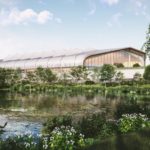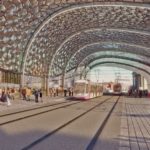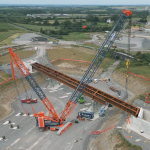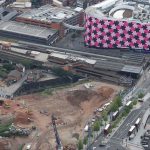Sector - Commercial
HS2 drives £10Bn economic uplift in the West Midlands
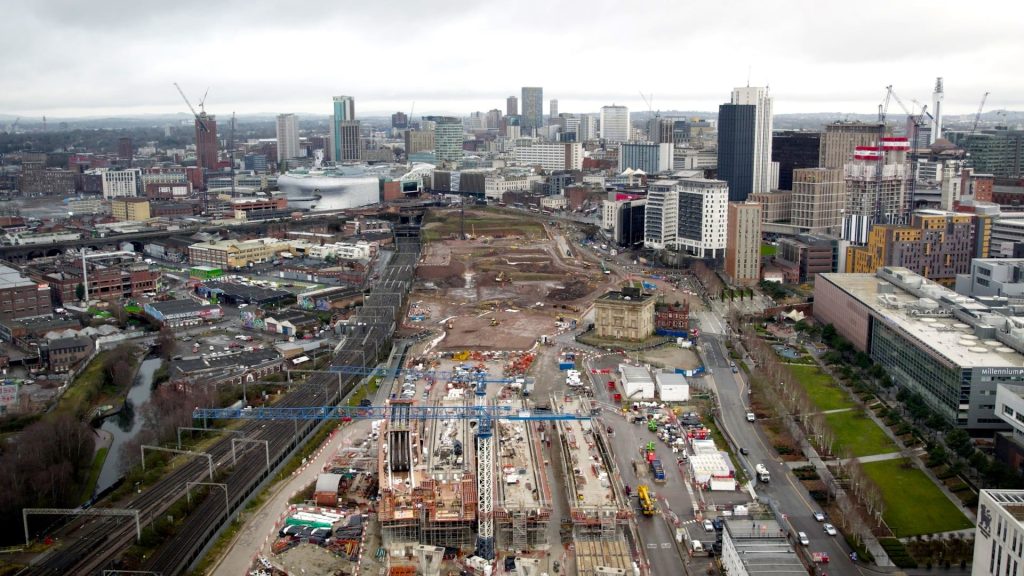
New research shows that the future arrival of HS2 in the West Midlands is already driving huge investor confidence in the region, with data pointing to an economic uplift of £10Bn over the next ten years.
Economic analysis of the areas close to HS2’s three hubs in the West Midlands – Curzon Street Station in central Birmingham, Interchange Station in Solihull, and the Washwood Heath Depot and Network Integrated Control Centre – shows dramatic increases in regeneration and investment in the last six years.
Since Royal Assent was granted for the railway in 2017, the number of planning applications seen in a 1.5 mile radius around these three major HS2 hubs has increased by two-thirds.
Over the same timescale, the area of total planned floorspace – including commercial and residential – has increased by 200%, and the planned number of new homes has increased by almost 500% – from 10,000 to 55,000 homes.
According to independent research commissioned by HS2, this increase in investment activity far outstrips any rises in planned development outside of HS2’s impact zones and has occurred despite economic shocks caused by the war in Ukraine and the COVID-19 pandemic. The rate of increase in planned housing within HS2’s impact area has been 14 times greater than elsewhere in the region, with the uplift in total planned floorspace over four times greater.
Since 2017, the construction value of major new projects in HS2’s three impact zones has increased by 240% – from £4.5bn to £15.4bn. This is further evidence of increased investment and activity around the three HS2 hubs.
This building boom is contrary to activity outside of HS2’s impact zones, where the construction value of new planned projects has decreased by 16% in the same period – from £19.3bn to £16.3bn.
The numbers and values of projects since 2017 are also much higher compared to an equivalent period before HS2 was given the green light in Parliament.
Sir Jon Thompson, Executive Chair at HS2 Ltd said: “This new research provides evidence that HS2’s future arrival is already driving transformational regeneration and investment in the West Midlands. It shows that investor appetite, regeneration and investment close to where we’re building our three key assets in the region has surged in the last six years.
“Driven by the promise of enhanced connectivity and heightened investor confidence, HS2’s arrival is spreading prosperity and opportunity to the communities it touches for generations to come.”
Andy Street, Mayor of the West Midlands, said: “This research demonstrates that HS2 has delivered substantial investment and development opportunities in our region in recent years.
“Whether it’s urban regeneration, improved local transport connections, increased housing provision and of course new jobs, HS2 is benefitting local people, businesses and our wider economy.
“It’s vital that local people see the tangible benefits of major schemes like this.”
HS2’s landmark Curzon Street Station in central Birmingham provides excellent connectivity to Eastside and Digbeth, enabling wider regeneration by linking together the learning and creative quarters, new residential developments and the city centre. It offers seamless connections to the local transport network including buses and the Midland Metro with a tram line running alongside and under the station, and will create new public spaces, including two squares and a promenade.
Interchange Station in Solihull will be one of the best connected places in the UK with its direct access to the NEC, Birmingham Airport and Birmingham International station. The arrival of HS2 has sparked extensive growth plans in the surrounding area, spearheaded by the Arden Cross masterplan – a mixed-use scheme including a new residential district, commercial space for innovative businesses and a world-leading centre for research and development.
Washwood Heath Depot in north-east Birmingham will act as the nerve centre of the HS2 network, where trains will be serviced and stored, and a purpose-built Network Integrated Control Centre will oversee the running of the high speed railway. It has spurred the development of a 50-acre brownfield site which will unlock 240,000 square metres of land for commercial use and 700,000 square metres of logistics space, creating opportunities for employers and the community, and 1,000 new jobs for local people.
If you would like to read more stories like this, then please click here
Related Articles
More Commercial News
- Jacobs to deliver advisory services to public sector clients through 2027
3 Dec 25
Jacobs has been named as a supplier on the Crown Commercial Service’s (CCS) Management Consultancy
- From One-Time Project to Lifetime Client: How Smart Pricing Wins You Repeat Construction Work
26 Nov 25
Learn how to price construction work for profit and trust—turning one-time jobs into lifetime clients
- Groundbreaking at Liverpool Waters
6 Nov 25
Groundbreaking starts at Central Docks.
